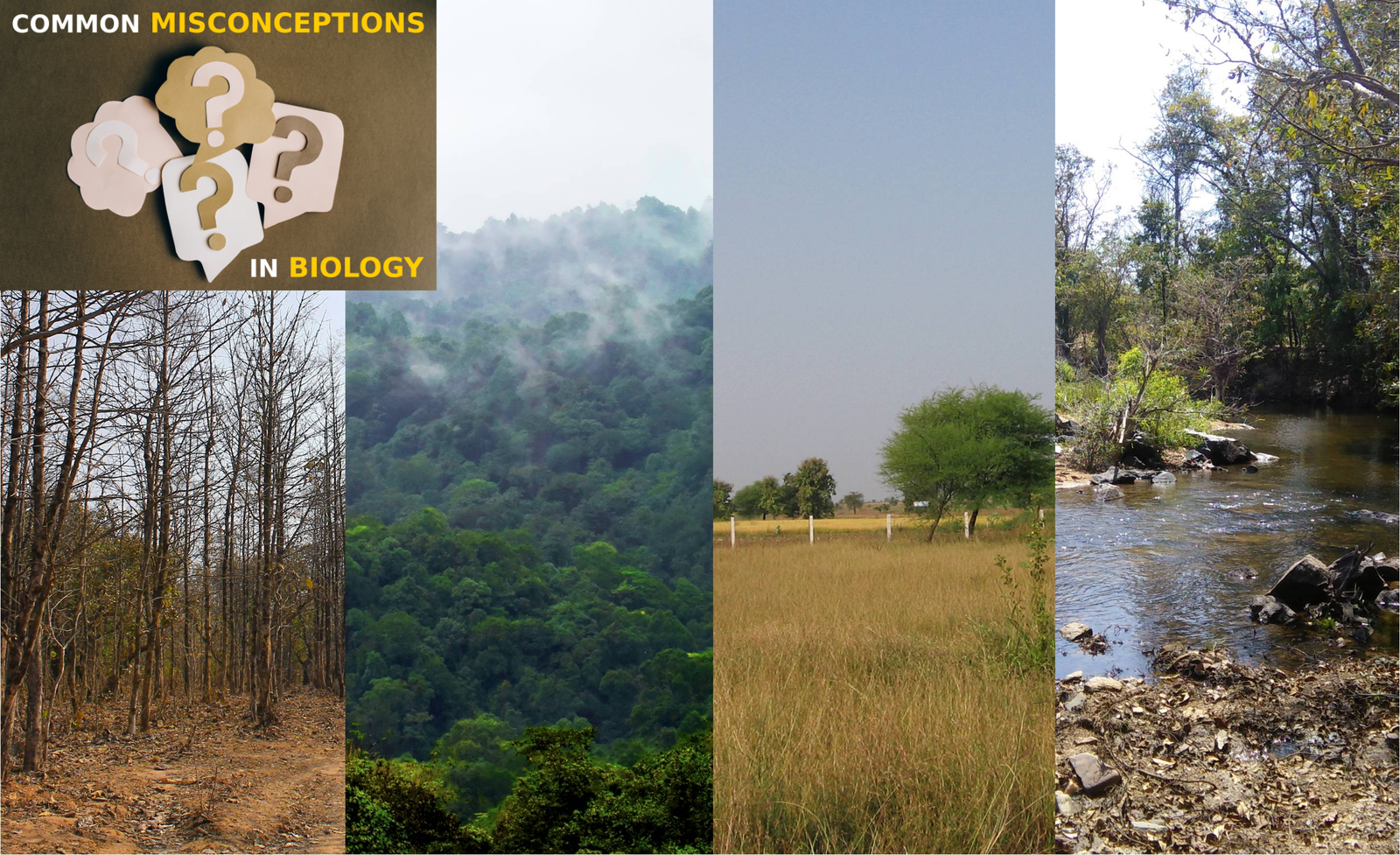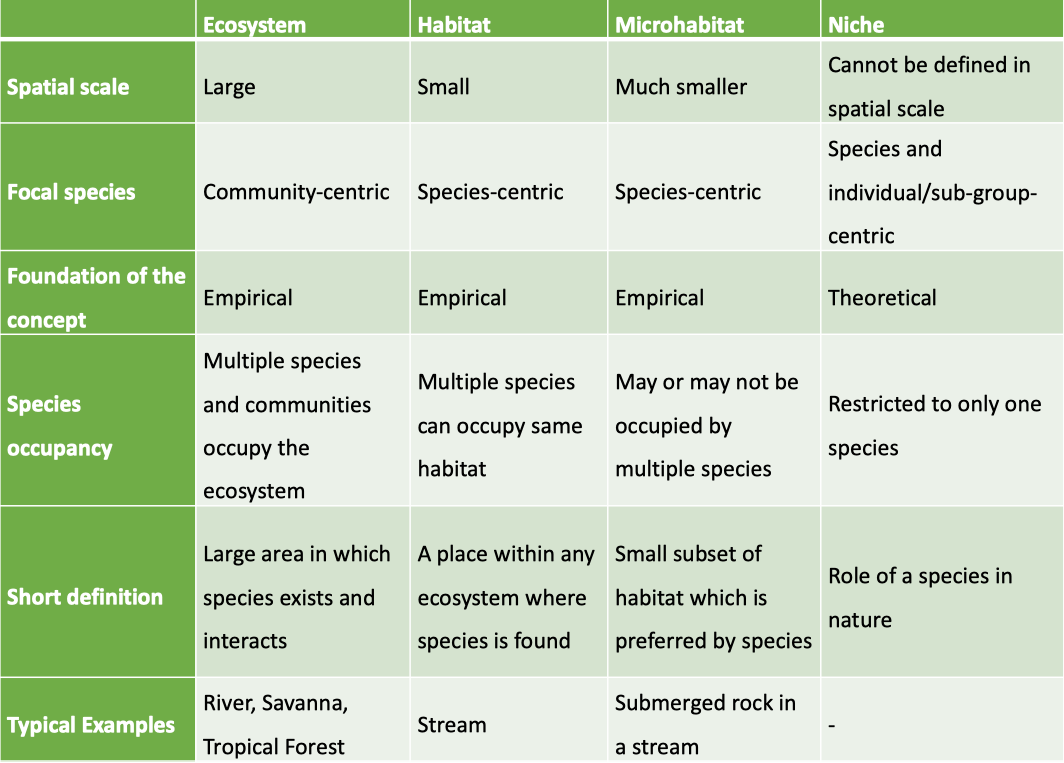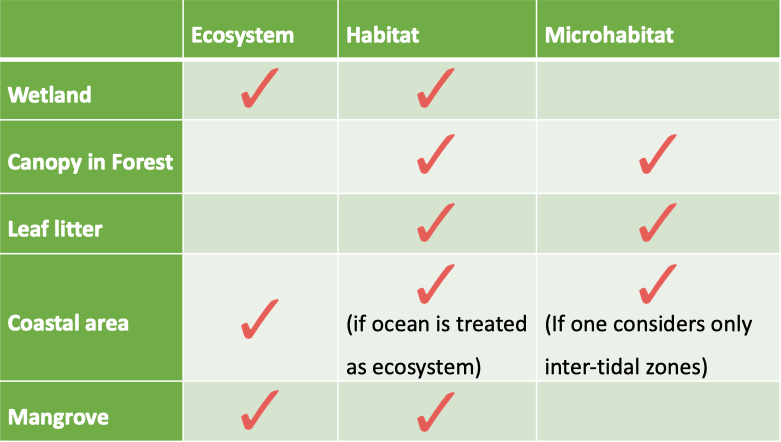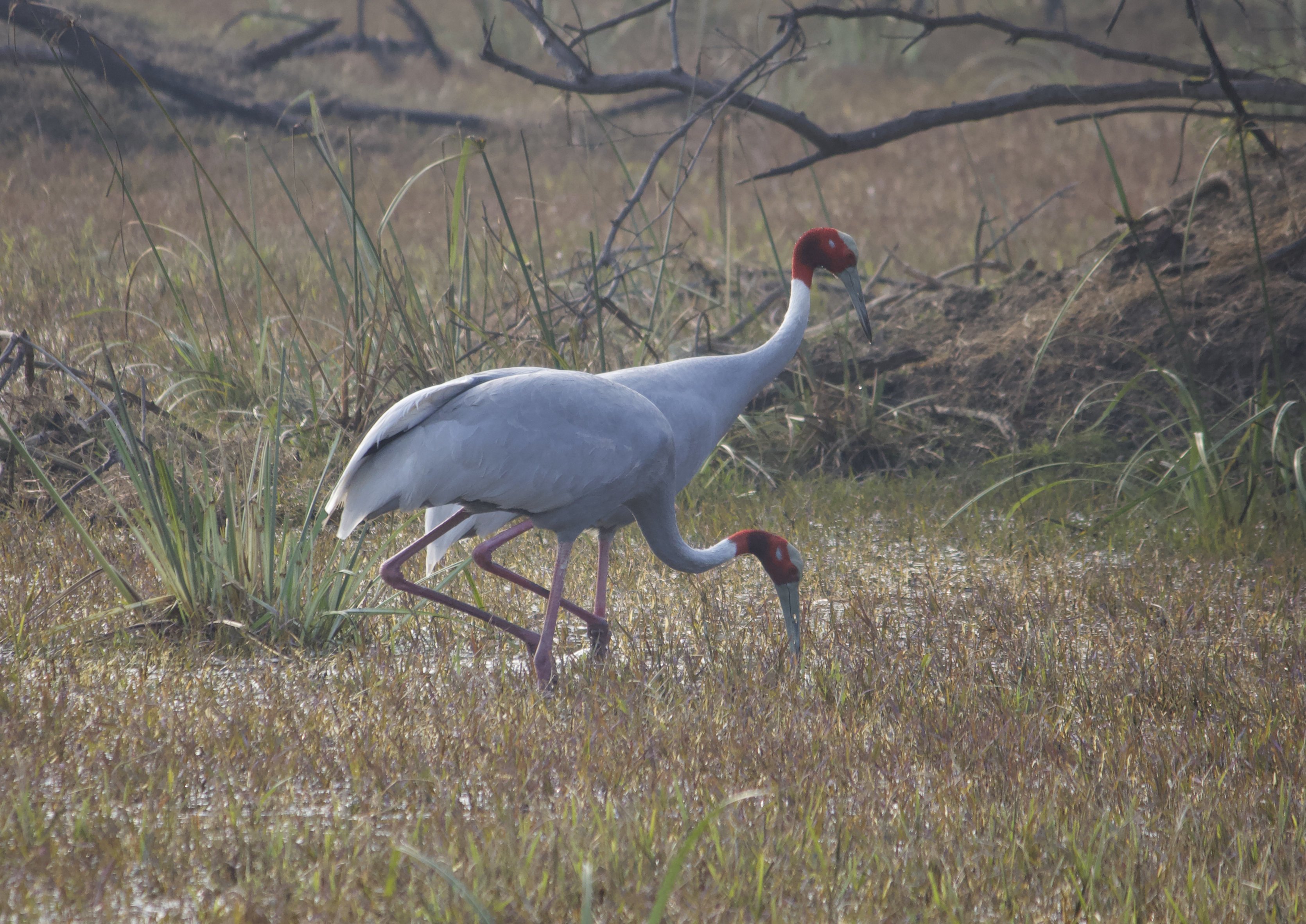Speak of comfort zones! In this article, Abhijeet Bayani, a field biologist and an educator at the Indian Institute of Science, Bengaluru, disentangles the meanings and purposes of three terms commonly used in ecological studies to discuss the space in which an organism thrives – habitats, microhabitats and niches.

In one of the undergraduate field trips to Western Ghats, my students and I got to stop over a slow-flowing shaded stream. This stream was only a few meters wide, but long enough to make us unable to find its origin or end. This stream was so serene that we all were stunned by its natural splendor. The purpose of these trip was not just recreational, so I was teaching various types of ecological systems along with the species and their interactions in the real-life scenario. While teaching, I asked students initially to observe the area and predict what kind of organisms were likely to be found. Among the various responses, fishes and frogs were the primary and obvious ones. With this, we actually began to find those and to everybody’s surprise, frogs were more abundant than the fishes.
I could identify frogs and they were mainly Micrixalus, Nyctibatrachus, and Indirana (Fig 1). My students were seeing these frogs for the first time and hence more keenly. While locating these frogs in the stream, a pattern emerged out of their observation that Micrixalus preferred rocks that are partially submerged in the flowing water, Nyctibatrachus preferred either the water or the banks but very close to water and Indirana was more-or-less found on land slightly far from flowing water but still within the same stream.

As the discussion progressed further, one student said, “As these frogs are so abundant here, this area must be the best suitable ecosystem for these frogs.” Another one asked, “As these frogs are not found anywhere else, is this kind of stream a typical habitat of these all species?” My answer was yes to both the questions. The tropical forest of the Western Ghats is the ecosystem and the stream is the habitat for these frogs. The second student further suggested, “If stream is the habitat, then submerged rocks for Micrixalus, water or close-by banks for Nyctibatrachus, or the land within the stream for Indirana must be the independent microhabitats for them”. My answer was yes once again. Nevertheless, there seemed to be a disagreement on this.
“These may not be microhabitats; these must be independent niches. Nyctibatrachus was not found on the submerged rocks as it was occupied by Micrixalus, there must be a competition”, said a student. Before I could answer, the first student argued yet again saying “stream is a small ecosystem, how can there be microhabitat, habitat or niche within such small ecosystem? We need more data to reach a conclusion!” This discussion continued throughout the trip, but in the end, I could clear their apparent confusion among different concepts. Let’s see how.
Let’s extract four principle terms out of this elongated discussion: (i) Ecosystem, (ii) habitat, (iii) microhabitat and (iv) niche.
Ecosystem is largely defined as a community of living organisms that interact with its surrounding, i.e. living as well as non-living components/factors, together as a single system. It is generally spatially large and complex in terms of interactions and exists with a definite delineation but somewhat arbitrarily. It is defined keeping species communities central and their interactions with surrounding biotic and abiotic components that may be observable or non-observable. (see Table 1)
Table 1. A comparison of some of the key features of an ecosystem, habitat, microhabitat and niche

Habitat is defined as a place where a given species can be found. It is a place where the focal species is most likely to be found naturally. The term habitat is used more in an empirical form where real-life observations (and not the probabilistic predictions) on occurrence of a species are necessary. We keep single species in focus and build the concept around it. Nevertheless, there are numerous occasions where the same habitat is occupied by another species and both of them co-exist harmoniously.
Microhabitat is essentially a subset of a habitat. It is spatially smaller and represents a specific place in a given habitat for that species. It is often seen that multiple species that may occupy same habitat would have selective preference for different microhabitats.
Ecological niche (or just Niche) is defined as an n‑dimensional hypervolume in which a species exists where the dimensions of this ‘hypervolume’ are its biotic and abiotic factors. In other words, it describes how a species or its individuals respond to and alter the actual distribution of all its biotic and abiotic resources. Niche characterizes the position of a species within an ecosystem comprising both the habitat requirements and its functional role. Niche precisely takes all the requirements into consideration for a single individual or population of that species to survive and reproduce. Niche is a complex term to define and study. It is used more in theoretical form where empirical observations of ‘all’ the requirements of a species are implausible. Niche is a highly species-centric term; it may even take each individual of the focal species into consideration. Since there are numerous factors that are required for a species to survive (and in turn to define the ‘hypervolume’), it is highly likely that one species would have extremely specific requirements that would not be shared with the another closest species; and therefore, one only one species can occupy the given niche.
Table 2. Some instances of overlaps between the different terms

When an endemic frog species is found in a stream that occurs in a MoistTropical Forest of Western Ghats, it can be rightly stated that the frog species belongs to MoistTropical Forest Ecosystem and its habitat is the stream. But if a frog is generally found in a Stream irrespective of where the stream is present (tropical forest, deciduous forest, grassland or alpine area), it will still be habitat for that species but what ecosystem does it typically belong to cannot be said (a stream cannot exist on its own independently, it is usually a subset of a larger spatial area).
It is often difficult to delineate the difference between microhabitat and niche.
In our example of Micrixalus, Nyctibatrachus and Indirana in a stream lacks the detailed quantitative observations of other biotic and abiotic factors thus, it is best to call the independent and specific physical spaces occupied by them as ‘microhabitat’ and not as ‘niche’. The stream is a habitat that occurs in Tropical forest (ecosystem) of western Ghats.

There may be occasions where the ecosystem may also represent a habitat of that species (Table 2). For example, species that occur in wetlands. Wetland is an ecosystem to which the Sarus Cranes (Figure 2) belong, but it is also its habitat. Such examples are numerous in nature and indicate that the concepts cannot be precisely defined or may not have definite rigid boundaries, which brings about the confusion in categorizing them. As long as the ecosystem is to be defined, there are now some standard classification systems available e.g. Lugo et al. 1999; Bailey 2009; and Keith et al. 2020 (IUCN’s classification). Habitat and microhabitat remain largely context dependent and interchangeable based on the focal species. Niche is now more of a theoretical framework used mainly in the ecosystem modelling as it is practically impossible to study all the requirements of a species, though there are attempts to do so in some species.